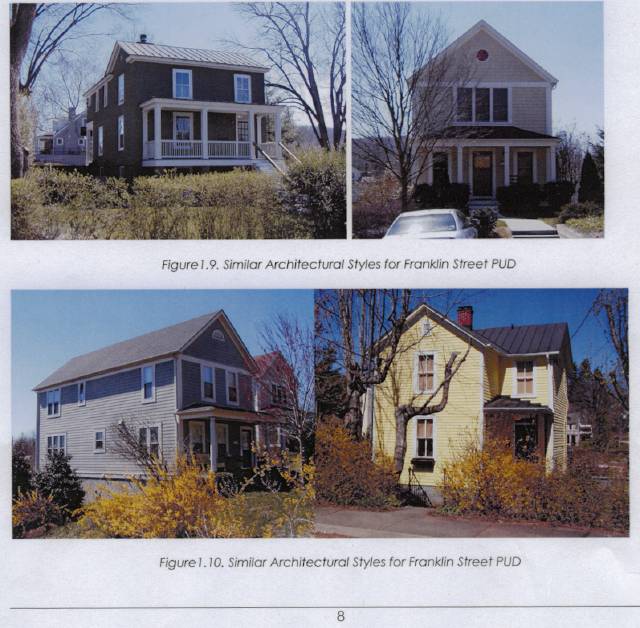 whereas a PUD provides an opportunity to build in a controlled manner echoing the existing context of the Woolen Mills neighborhood.
whereas a PUD provides an opportunity to build in a controlled manner echoing the existing context of the Woolen Mills neighborhood. (8) To provide for coordination of architectural styles internally within the development as well as in relation to adjacent properties along the perimeter of the development
It will be difficult to control or coordinate architectural styles if the site is subdivided by right,  whereas a PUD provides an opportunity to build in a controlled manner echoing the existing context of the Woolen Mills neighborhood.
whereas a PUD provides an opportunity to build in a controlled manner echoing the existing context of the Woolen Mills neighborhood. ![]() The proposed attached units will be similar in style as shown in pictures 1.9 to 1.1 0.
The proposed attached units will be similar in style as shown in pictures 1.9 to 1.1 0.
Here, finally, the people who produced this presentation learn how to use a camera honestly! Hooray! No more vast seas of asphalt, no more pictures of the Industrial Buildings located in Belmont.
Now, at long last they show pictures of four, single family detached, houses in the Woolen Mills. Two of the houses are contributing structures in the Mill Village Historic District.
The other two are relatively new, built by the son of a long-time neighborhood resident who lives in an 1850's house within sight of the new construction .

The buildings will be harmonious with the existing architectural design of the surrounding neighborhood and land uses.![]()
Seven Townhouses in a row, with minimal variation, like eggs in a crate, will not be harmonious with the existing architectural design of the neighborhood.
The yellow house above is the Drumheller house, 1619 East Market, built in 1900. located next door to the old Woolen Mills School which Marchant negotiated with Albemarle County to locate in the Mill Village.
The green house, upper left, was a renovation done by Shelter Associates. It belonged to Henry Spicer, carpenter at the Mill. (Incidentally, Shelter will soon be rennovating 1709 East Market, built in 1895 by Joe and Emma Amiss. One of the principals of Shelter, John Diven, lives in the neighborhood. JD is a builder of great integrity.)